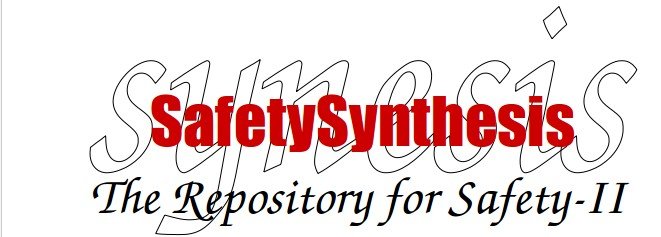(c) Erik Hollnagel, 2020
RPET* - The Resilient Performance Enhancement Toolkit
It is natural to try to be free from harm and injury, whether as a person or an organisation. Yet in the rush to learn from what has gone wrong two important facts are missed. The first is that most of what happens, indeed nearly everything that happens, usually goes well. It would therefore seem reasonable to learn something from that. Learning from failures alone is not only marginal, it is also expensive and mostly ineffective. The second fact is that if there are causes for what goes wrong then there must also be causes for what goes well. From a Safety-I perspective the two types of causes must obviously be different; otherwise eliminating the causes of accidents would also reduce the likelihood for work to go well.
Safety-II argue that an organisation should learn from everything that happens - from failures, from successes, and from everything in between. Adverse outcomes do not happen because something fails but because system adjustments are insufficient or inappropriate. Work that goes well is not the result of the effective elimination of hazards and risks but rather represents “an ongoing condition in which problems are momentarily under control due to compensating changes [in components]” (Weick, 1987). Safety is therefore a condition where as much as possible goes well which can be achieved by making sure that everything functions well but not by preventing that something fails. To do so requires that we try to learn from what goes well. To do so is deceptively simple. All it takes is that we look at what happens each day, try to understand why it goes well, and try to learn from that. This has a number of practical implications.
- Learning should take place when work takes place and preferably be a part of work. If that is not possible, then it should take place as soon as possible. If learning is delayed people may be unable to recall trivial but important details of their work and of what happened when “nothing” happened. This may to some extent be compensated by ensuring that learning opportunities are regular and seen as a natural part of what goes on in the workplace.
- Learning should take place where work takes place, on all levels of an organisation from the “coalface” to the boardroom. Learning should be immersed in the daily working environment and not happen off-site. If learning requires “tools”, these should be an integral part of the existing work environment. Ideally, as learning becomes part of the daily routine, it should require no extraneous “tools” at all.
- Learning should be by and for the people who are part of the work. Learning should be based on what people know and remember from the work situation, not what they discover by asking others about it. Learning should not be the prerogative of specialists, such as a learning team or a Human Resources Department. Learning should be by and for insiders and rather than by and for outsiders and should not require skills that are not already possessed by the learners.
Although learning from what goes well really is simple, it may at first look as a formidable problem because it is unfamiliar to most people. It is therefore helpful to describe how it can be done in a little more detail and illustrate that with an example. A link to amore detailed description can be found here.
* RPET is pronounced /rɪˈpiːt/ and is thus a homonym of ‘repeat’.
(Last update 2019-04-24. To be continued ...)
